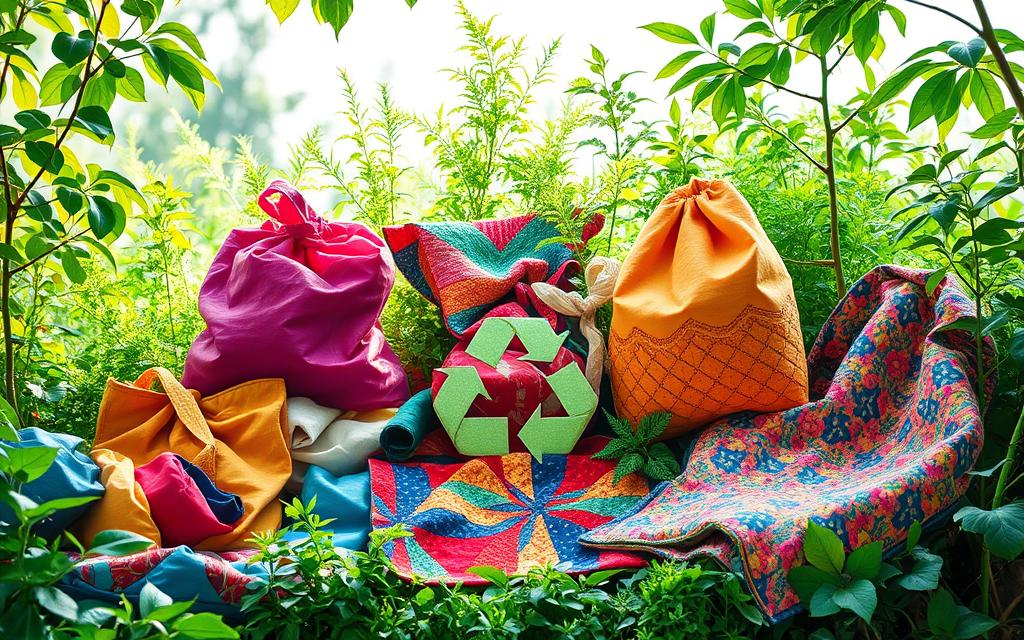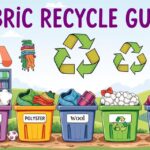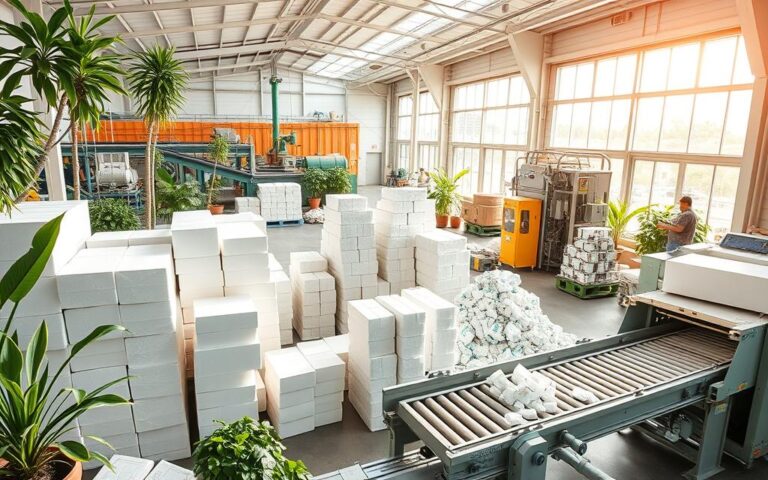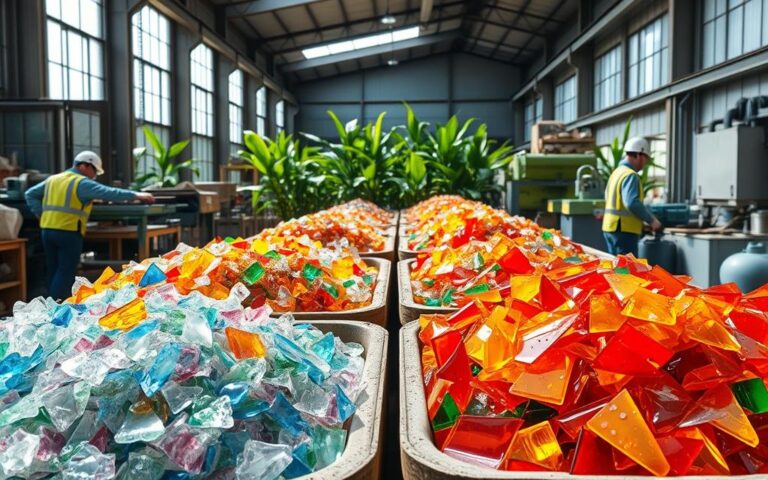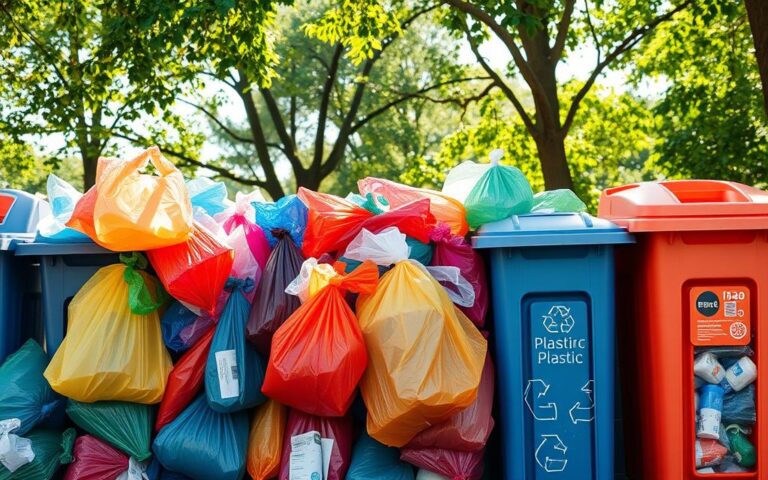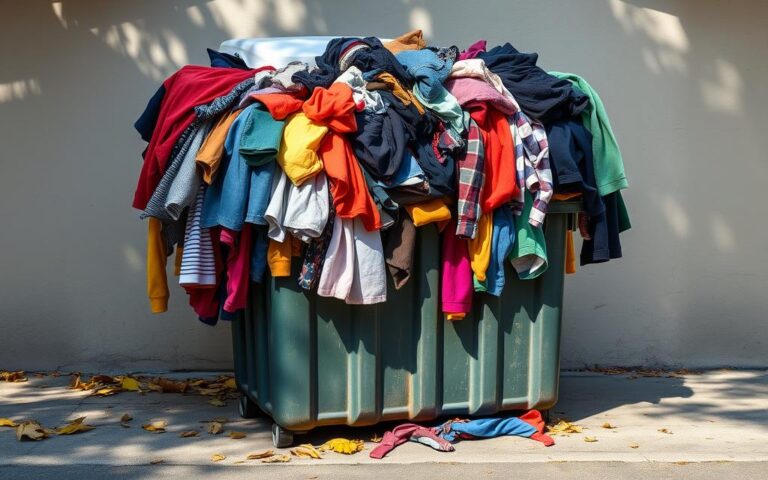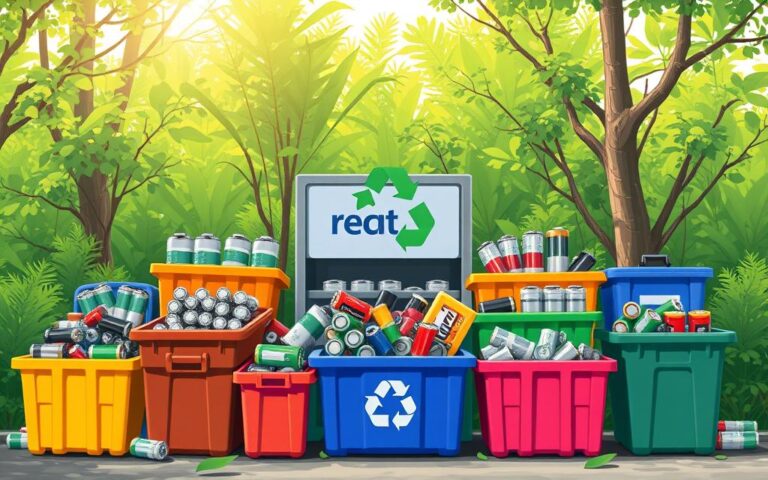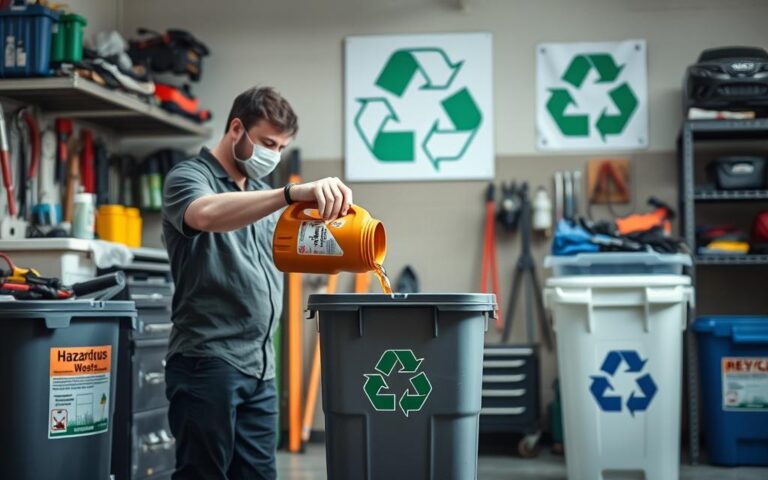How Do You Recycle Textiles? Eco-Friendly Choices
The fashion sector produced an immense 17 million tons of textiles in 2018. Shockingly, around 85% of this ends up in our landfills. Notably, 95% of these materials could be given a new life through reuse or recycling. The use of plastic fibres in many items has a huge environmental impact if thrown away carelessly.
Learning about how to dispose of clothing sustainably helps us join a global effort to cut waste and foster sustainability. Recycling textiles saves important resources and cuts down on pollution from waste processes. Here, we aim to uncover ways to recycle fabrics, helping everyone live more sustainably.
The Importance of Textile Recycling
The cost of textile waste to the environment is huge. As we make more clothes, the harm increases. More people are realising how important it is to recycle textiles. This is because of the worrying facts about how much textile is thrown away. Every year, millions of tonnes of textiles are tossed out. It is vital for both people and businesses to understand the impact.
Environmental Impact of Textile Waste
Textile waste causes a lot of pollution and problems for waste management. Making clothes produces a lot of greenhouse gases and uses a lot of water. The textile industry is responsible for about 10% of the world’s carbon emissions. This shows clearly we need to use more sustainable methods. When not managed right, these materials harm our ecosystems. Toxic dyes and chemicals get into the soil and water.
Global Statistics on Textile Disposal
The current stats on textile disposal show we need to act fast. In the UK, out of 2 million tonnes of worn clothing, only 0.5 million tonnes are recycled. A worrying 1 million tonnes are simply thrown away. This is part of the 14 million tonnes of textile waste Europe generates, but only 25% is recycled. In the US, 13 million tonnes of textile waste are produced every year. Only 15% of this is recycled after use. This issue impacts not just the environment but also jobs and saving resources.
| Region | Total Textile Waste (Tonnes) | Recycled Textile Waste (Tonnes) | Percentage Recycled |
|---|---|---|---|
| UK | 2,000,000 | 500,000 | 25% |
| Europe | 14,000,000 | 5,000,000 | 25% |
| US | 13,000,000 | 1,950,000 | 15% |
What Is Textile Recycling?
Textile recycling means turning old clothes into new products. It helps keep clothes out of dumps. It’s becoming more popular as people see the need to reduce waste.
Understanding Closed-Loop vs Open-Loop Recycling
Closed-loop recycling makes textiles into the same type of products. It uses less new stuff. Open-loop recycling turns them into different things, often using more resources. Most recycling now doesn’t fully stop the need for new materials.
The Definition of Textile Recycling
Recycling textiles is about finding new uses for old clothes. But, in 2017, out of 16.9 million tons of textiles, only 13.6% was recycled. This leads to over 10 million tons of waste every year. Natural fibres are harder to recycle than synthetic ones, making the process challenging.
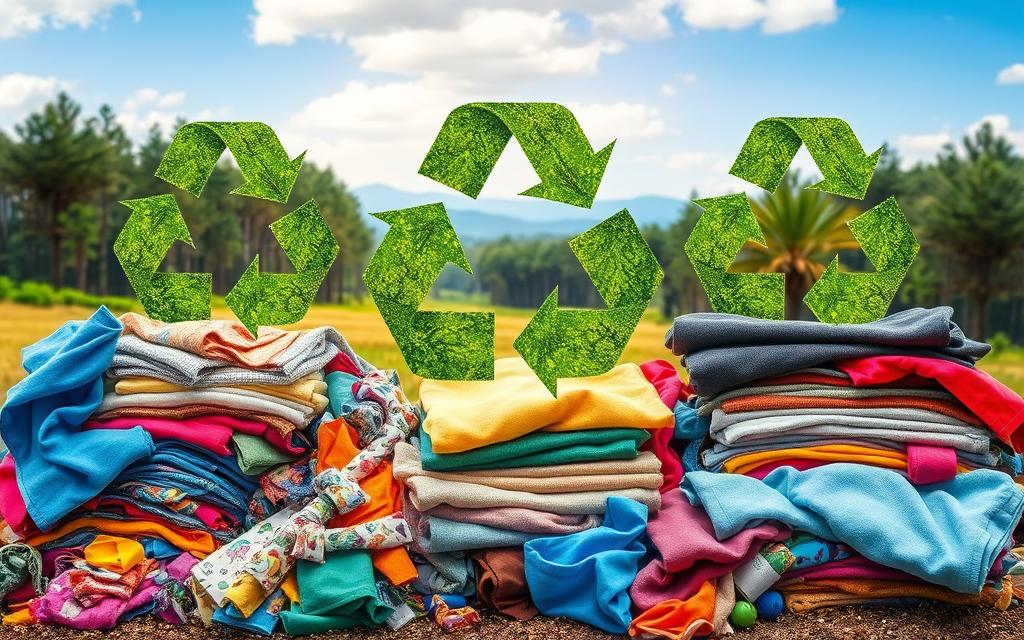
Some companies work with brands to recycle unused clothes. They use a method that breaks down clothes by type and colour. This helps reduce the amount of waste.
We need better recycling methods to make fashion more sustainable. For more on textile recycling, click here.
How Do You Recycle Textiles?
Recycling textiles helps in reducing environmental impact. It also conserves resources. Understanding the correct steps to recycle textiles is crucial. This knowledge encourages responsible disposal. The process prevents waste. It also challenges misconceptions about textile recycling, leading to better behaviours.
Steps to Properly Recycle Textiles
Recycling textiles starts by checking your clothing’s condition. Here are the steps to take:
- Evaluate clothing for wear and tear. Find gently used items that can be donated, sold, or repurposed.
- Look into local recycling programmes for old textiles. Many communities have schemes to assist.
- Take your textiles to specific recycling bins or attend recycling events organised by local charities.
- Be aware of where your donations go. Understand that only 10-20% of donated clothing goes to thrift stores. The rest are repurposed or sent abroad for recycling.
Common Misconceptions About Textile Recycling
There are misconceptions of textile recycling that prevent proper recycling. Here are some:
- Thinking all donated clothing is reused. In reality, much of it ends in landfills.
- Believing all recycling schemes take any textile. Actually, there are specific guidelines for what can be accepted.
- Assuming textile recycling doesn’t help much. Each recycled item helps reduce the industry’s carbon emissions, which is about 10% of the global total annually.
Knowing these steps to recycle textiles and understanding misconceptions of textile recycling helps us make better choices. This leads to a sustainable future.
| Misconception | Reality |
|---|---|
| All donated textiles are reused | Many items go to landfills or become lower quality products. |
| Every textile item can be recycled | Some are not accepted because they are contaminated or damaged. |
| Recycling textiles has little impact | It reduces waste and saves resources. This also cuts down on greenhouse gas emissions. |
Recycling Options for Gently Used Clothing
There are many ways to recycle gently used clothing. Doing so can give clothes a new lease of life. It also supports eco-friendly practices. Donating or selling your items is quite impactful. Charities and thrift stores welcome quality garments. They help reduce textile waste and aid those in need. Sites like Poshmark and Depop let you sell directly. This way, you can make extra money while caring for our planet.
Donating and Selling Your Clothes
Donating your clothes is a kind and sustainable choice. You can give to local charities or consignment stores. There are plenty of places to declutter responsibly. Retailers like Patagonia and H&M offer programs for returning or selling clothes for recycling. This supports a circular economy. It ensures clothes are reused, not thrown away.
Participating in Clothing Swaps
Clothing swap events are a fun way to recycle. These events build community and offer a way to update your wardrobe for free. This saves money and prevents clothes from going to landfills. To learn more on recycling clothes, visit Earth911. By using these recycling methods, we can lessen textile waste. We can also encourage sustainable living in our communities.
FAQ
What is textile recycling?
It is the process of turning old or unwanted textiles into new products. It helps make the fashion industry more sustainable. This reduces waste significantly.
How does textile recycling benefit the environment?
It cuts down on landfill waste. This means fewer greenhouse gases. Reusing materials also saves natural resources and fights pollution.
What is the difference between closed-loop and open-loop recycling?
In closed-loop recycling, textiles become the same type of material again. Open-loop recycling changes them into different products. The closed-loop system is better as it uses fewer new resources.
How can I properly recycle my clothes?
First, check if your clothes are in good shape. If so, donate them or sell them. For worn-out clothes, look for local recycling programs. Know where your clothes end up to ensure they’re recycled.
What are some common misconceptions about donating clothing?
Many think all donated clothes are reused. However, only 10-20% find new owners through thrift shops. The rest might end up in landfills. It’s vital to know the fate of your donations.
What options do I have for recycling gently used clothing?
Donate to charities or thrift stores. You could also sell them on sites like Poshmark or Depop. Swapping clothes with friends is another great way to recycle and refresh your wardrobe.
Why is it important to recycle textiles?
It reduces the fashion industry’s environmental damage. This industry contributes to 10% of the world’s carbon emissions. Recycling helps save resources and reduce pollution.
Can textile recycling help reduce carbon emissions?
Yes, recycling lessens the need for new materials. This lowers carbon emissions from producing new textiles. It’s a step towards a greener industry and fighting climate change.

